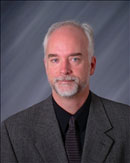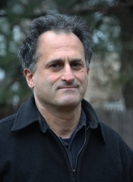
Mr. Robert Schultz
Local Arts Agency Fills in the Arts Education Gap for School District
Posted by Aug 21, 2012

Mr. Robert Schultz
 Rob Schultz
Rob Schultz
One of the more disturbing trends in our local public schools is the reduction of classroom time devoted to non-tested subjects. Despite the arts being labeled as “core,” tested areas of the curriculum are among the few things receiving adequate time and resources from strapped school districts.
Going the way of the horse-drawn carriage are things like music, chorus, theater, and visual arts, as well as formerly routine components of a well-rounded education such as recess, and field trips.
For those of us who work outside of public school systems but are determined to provide children with quality arts opportunities, one answer lies in building effective partnerships with our schools.
For many years (decades, actually) the Mesa Arts Center has worked with our local public school system as a partner in delivering accessible programs. For several years, grant funding allowed us to bring fifth graders from a 100 percent at-risk school to our arts center for targeted, afterschool activities in both visual and performing arts, taught by our full-time arts instructors. While the school didn’t have resources for transportation, our grant provided it—from school to the arts center, and we took them home.
More recently, for the last six years the arts center has used funding from our own Foundation to present our “Basic Arts” program at another elementary school. This program focuses on literature, with the school hosting our teaching artists and kids learning about a literary story. As a finale, the students are brought to the arts center to see the story performed live on the stage of one of our theaters, followed by talk-back and Q&A with the actors and director.
As we saw the results of these two programs and the benefits they bring to underserved children, we committed to hiring a full-time Arts Education Outreach Coordinator to really move things into high gear and create other partnerships.
Under her direction, we began a Creative Aging Program that brings a visual artist and a dance artist to assisted living facilities to work with ambulatory seniors, as well as a group of seniors afflicted with dementia; the Culture Connect Program, which provides free theater tickets to area schools so their students can attend performances, participatory activities, workshops, literature, and live artist demonstrations; and a comprehensive Jazz A to Z Program that uses the National Endowment for the Arts’s Jazz Curriculum as a guide to provide students opportunities to improvise, analyze, synthesize, engage in group collaborations, develop an individual voice, and broaden cultural perspectives—all through the uniquely American medium of jazz.
Read More













